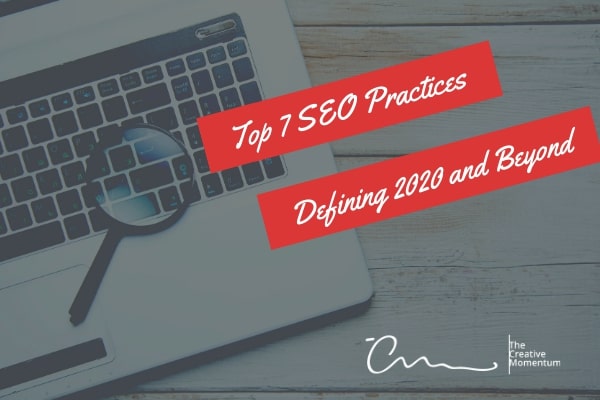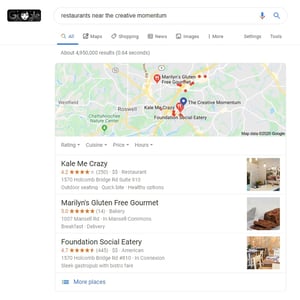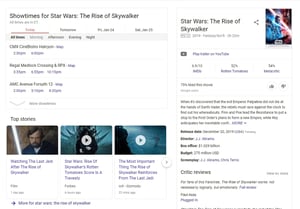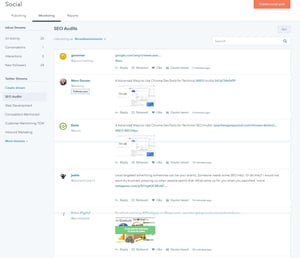
2020 rolls off the tongue a little better than 2019, doesn’t it? It’s a sleek year marking the turn of the decade, and over the past year, we've developed some appropriately sleek new strategies to adapt to the ever-changing SEO landscape. Without further ado, here are seven top SEO strategies to carry you into the coming year.
1. Context-Sensitive Search
Since late 2018 and throughout 2019, Google has been integrating a new natural language processing (NLP) into its AI algorithms. This update is called BERT—or, Bidirectional Encoder Representations from Transformers, for what that’s worth.
Like many other Google algorithm updates, BERT helps the search engine better understand the context of searches by assessing the entirety of the search query as a whole (compared to disjointed word-by-word assessments, which used to be the norm). This approach aims to bring more nuance to Google's prediction tools and, as always, create a better experience for the end-user. But what does it mean for SEO?
Businesses should take note of these updates and double down on their use of rank tracking software and keyword tracking tools. Google is getting better than ever at parsing out the specific intent and context of each query, which means that businesses will need to take a similarly granular view of their search data. Leverage Google Search Console alongside your other tools and pay close attention to your search trends over the coming months.
2. Zero-Click Searches
 SEO is all about driving traffic to your site—but what happens when a searcher gets his/her query solved right there on the SERPs? We’ve all experienced this at one time or another. We look for the address of a local restaurant or dig up a bit of trivia on the movie we’re watching, receiving our answer through a helpful featured snippet or data from Google’s knowledge graph. Easy peasy, right?
SEO is all about driving traffic to your site—but what happens when a searcher gets his/her query solved right there on the SERPs? We’ve all experienced this at one time or another. We look for the address of a local restaurant or dig up a bit of trivia on the movie we’re watching, receiving our answer through a helpful featured snippet or data from Google’s knowledge graph. Easy peasy, right?
While some businesses may worry that this trend is cannibalizing their well-deserved clicks, don’t worry. Zero-click trends will have little impact on your marketing funnel. Rather than worrying about that, your time is better spent learning how to optimize your business's data to appeal to the zero-click trend. Again, this comes back to more focused keyword optimization, with the goal of learning which search terms drive actual site visits. You'll also want to make sure your business’s information is correctly registered with Google My Business as well to make sure that any "zero-click" info that shows up is accurate.
3. E-A-T
More officially known as expertise, authoritativeness, and trustworthiness, a page’s E-A-T value has been a ranking factor for Google for a while now. In fact, it’s a key point mentioned in Google’s Search Quality Evaluator Guidelines under its definition of a “high quality” page:
- High level of expertise, authoritativeness, and trustworthiness (E-A-T).
- A satisfying amount of high quality content, including a descriptive or helpful title.
- Satisfying website information and/or information about who is responsible for the website.
- Positive website reputation for a website that is responsible for the content on the page.
Optimizing for these can be tricky, as many of these ranking signals involve off-site mentions, your page’s link profile, and whether or not Google deems your content “satisfying.” However, you can hedge your bets by making sure the content you produce is helpful, informative, and contextually-relevant. If you need to hire outside experts to produce accurate content, so be it. This is the basis of expertise, as defined in Google’s guidelines.
For authoritativeness and trustworthiness, work towards information transparency. Consider how your content is perceived by Google Authorship (bylines are important, here) and make sure you include thorough contact information on your page, including an about page, privacy details, and other logistic info. Your goal is to provide context to Google and make it clear that you’re an established, trusted entity in your niche.
4. Google Knowledge Graph
 One thing we've seen get plenty of attention lately is Google's Knowledge Graph. This is another zero-click SERP tool, so you've probably seen it in action, even if you've never heard the term. Similar to featured snippets, the knowledge graph appears in SERPs to provide contextually-relevant information when Googling, such as showtimes for a new movie or the hours of your nearest grocery store locations.
One thing we've seen get plenty of attention lately is Google's Knowledge Graph. This is another zero-click SERP tool, so you've probably seen it in action, even if you've never heard the term. Similar to featured snippets, the knowledge graph appears in SERPs to provide contextually-relevant information when Googling, such as showtimes for a new movie or the hours of your nearest grocery store locations.
And just like featured snippets, it’s possible to use these tools to your advantage and get your own content into the knowledge graph—an absolute must for smaller businesses who rely on local SEO. Make sure your site is updated across the My Business and Google Search Console tools, and bear in mind that knowledge graphs are generated from structured data and markups across multiple sources—meaning that your keyword strategies (particularly as they pertain to BERT) will be important to review as well.
5. Optimizing for Voice
You knew this one was coming. Voice-based queries are the way the SEO world is moving, led by mobile devices, voice assistant, and smart home tools. And as we know, search results work a little differently in voice than they do on physical devices. With voice-based SERPs, you get only one answer to your query—and 40% of the time, that answer is taken from a featured snippet.
Follow best practices for ranking for features snippets, here. Leverage long-tailed keywords to your advantage, aim to connect direct keywords in your title to the search in question, and try to provide answers succinctly enough to appear in a featured snippet box. These aren’t new strategies for 2020—but as voice searches become even more prominent, these strategies will surely get more competitive.
6. Advanced Social Listening
 Social listening is a new term for an old strategy, generally referring to the practice of tracking brand mentions across social channels in the interest of monitoring your online reputation. This isn't your typical social media monitoring—where you'll track likes, impressions, or engagements—it's a different approach where you'll learn about how the mainstream perceives your brand (and your competitors).
Social listening is a new term for an old strategy, generally referring to the practice of tracking brand mentions across social channels in the interest of monitoring your online reputation. This isn't your typical social media monitoring—where you'll track likes, impressions, or engagements—it's a different approach where you'll learn about how the mainstream perceives your brand (and your competitors).
The long-term goal here is to build higher-quality link profiles for your pages by getting a pulse on your target market. There are plenty of social listening tools out there to help you do it, too. Keep an ear out for brand mentions, keywords, hashtags, employee names, business locations, or keywords related to competitors. There’s no telling what you’ll find, here—but every mention you find can provide insight into possible adjustments for your social strategy, customer service, and more.
7. Mobile SEO
What SEO list would be complete without a word on mobile? Mobile SEO might as well be a best practice at this point, but surprisingly few of us have it nailed down. As a rule, it’s best to shoot for mobile-first web design when possible, adapting things for desktop later. Review your keyword strategy and structured data as they pertain to mobile, as your mobile searchers will likely favor different terms than your desktop users (due to the prevalence of voice queries, difficulties in typing, and so on).
As always, there’s a lot to cover in the world of SEO. If you need help improving your site, our qualified web developers can walk you through the details.


